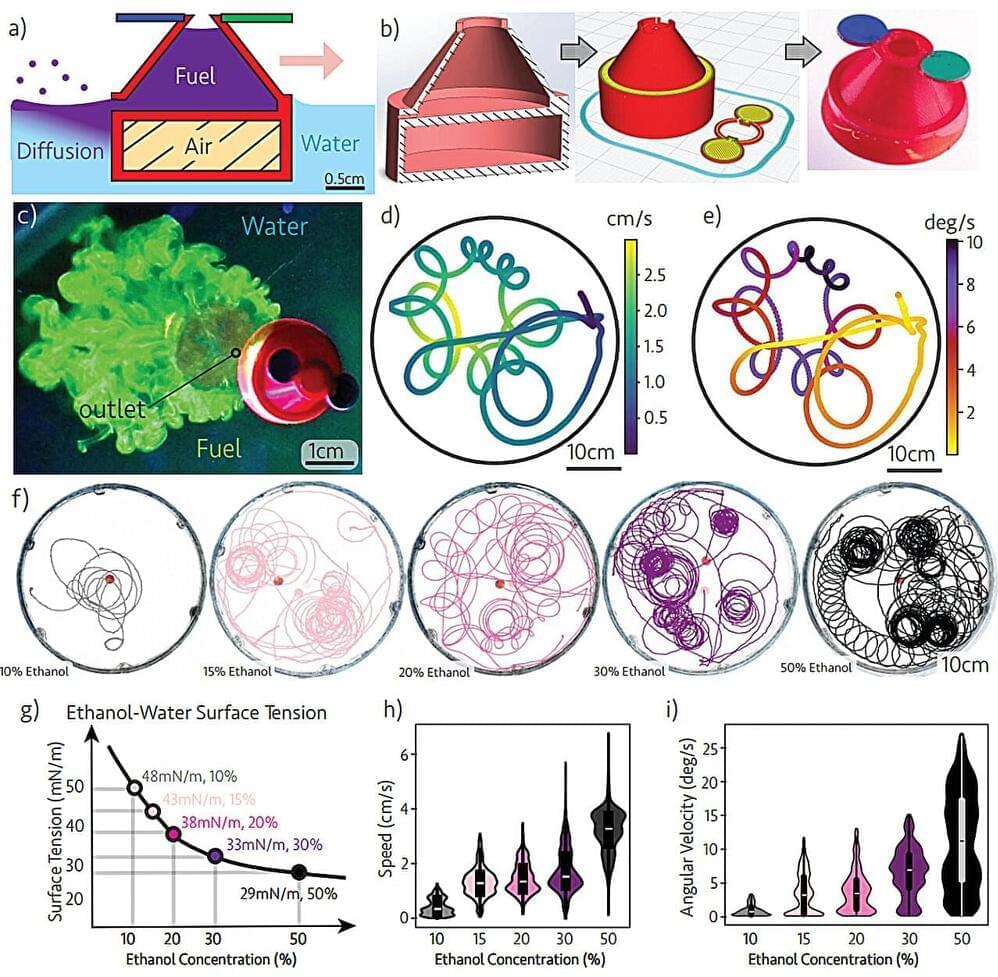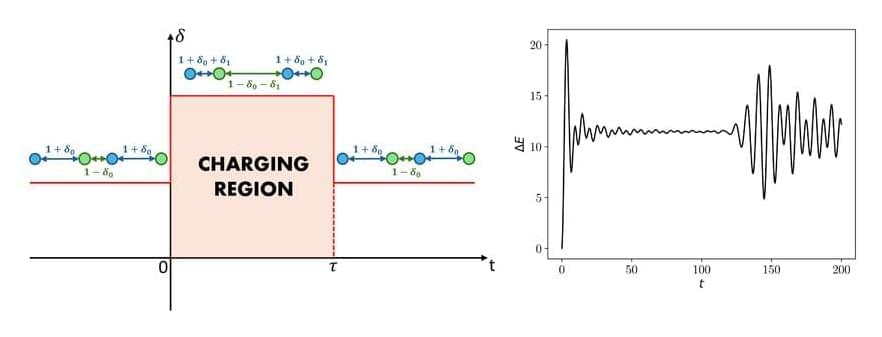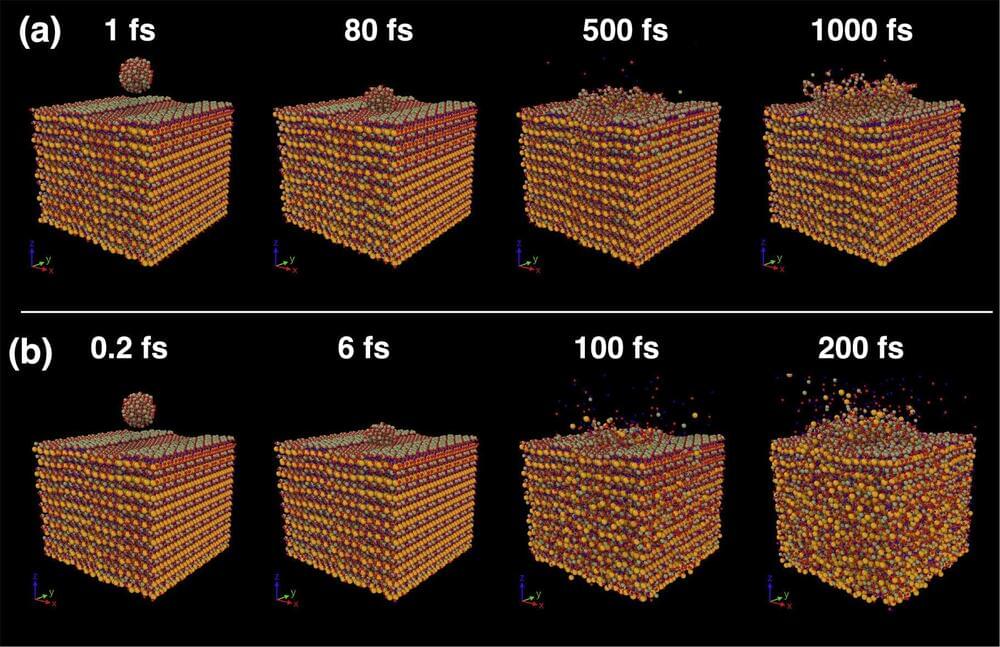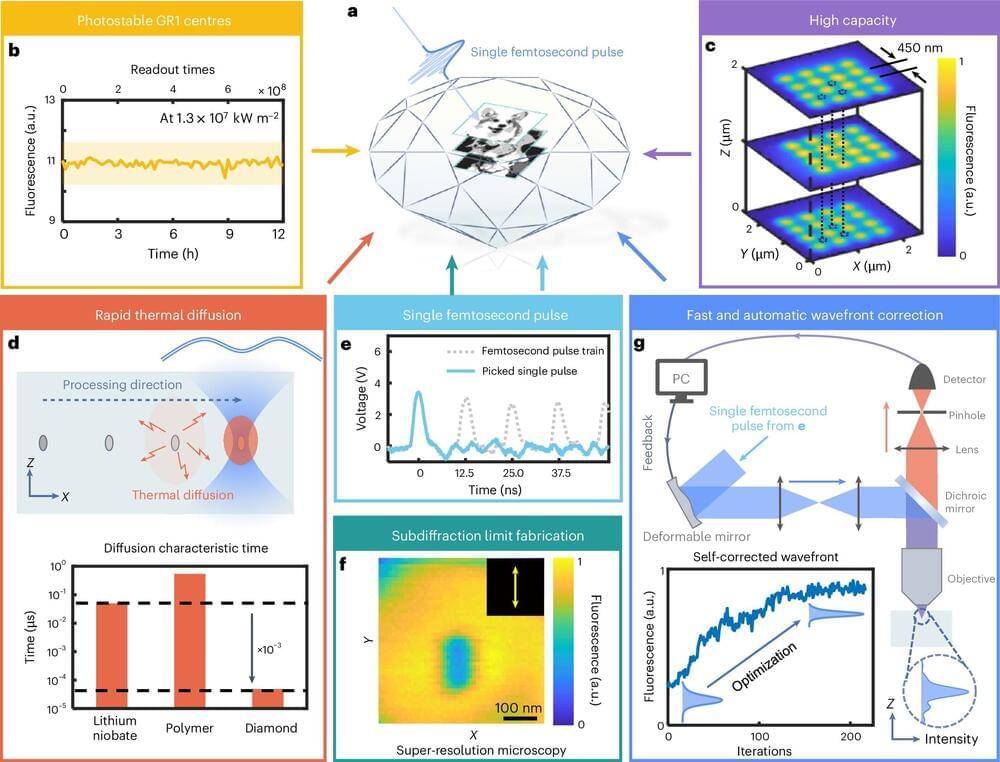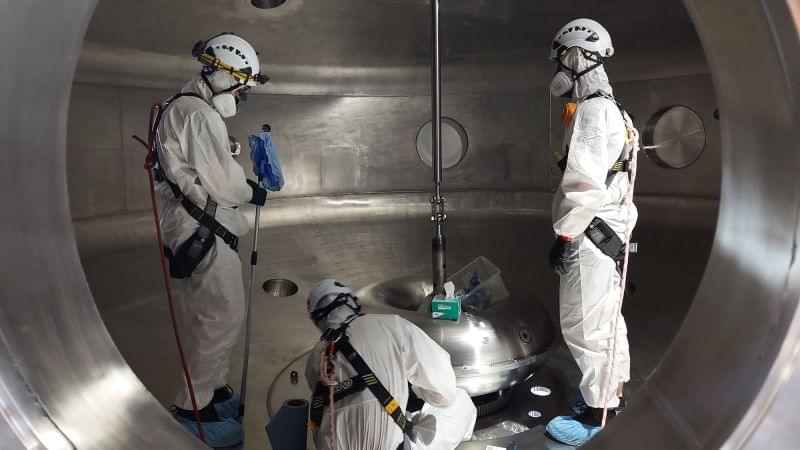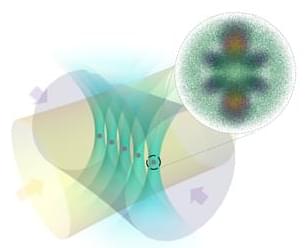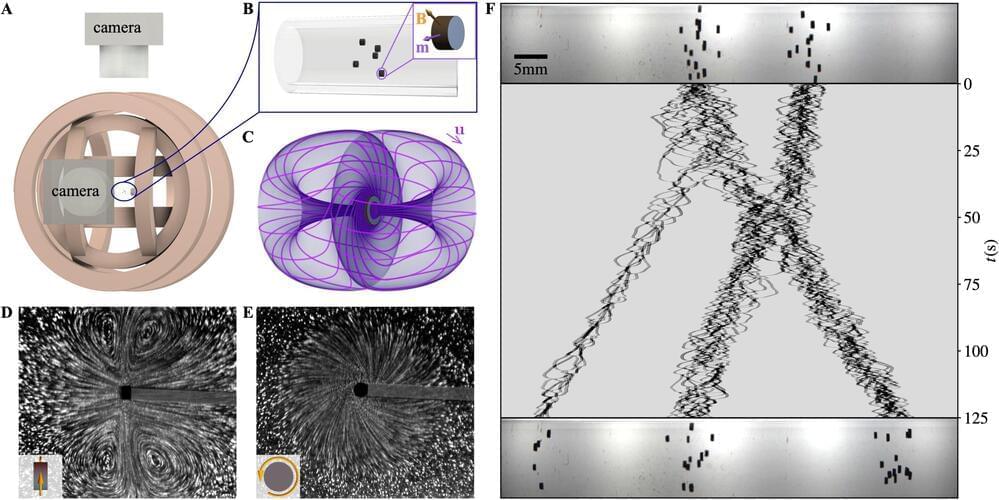A small team of physicists at the University of Amsterdam has demonstrated the ability of 3D-printed particles to propel themselves across the surface of a fluid, given the right fuel. The group has posted a paper describing their particles on the arXiv preprint server.
Prior research has shown that droplets with a surface tension lower than the surface tension of surrounding fluid will spread rather than mixing, a phenomenon known as the Marangoni effect. A drop of alcohol in a cup of water, for example, will spread across the surface rather than mix with the water and it remains until it evaporates. In this new effort, the research team used this effect to create self-propelling particles.
The particles were 3D printed into a shape like a hockey puck—each was approximately 1 centimeter in diameter. The particles were hollow, making them buoyant. The researchers described the hollow part of the puck as a fuel tank into which they poured a small amount of alcohol. They also poked a tiny pinhole in the puck to allow the alcohol to slowly escape when it was placed in a cup of water. Due to the Marangoni effect, the alcohol tried to spread, carrying the puck along with it.
